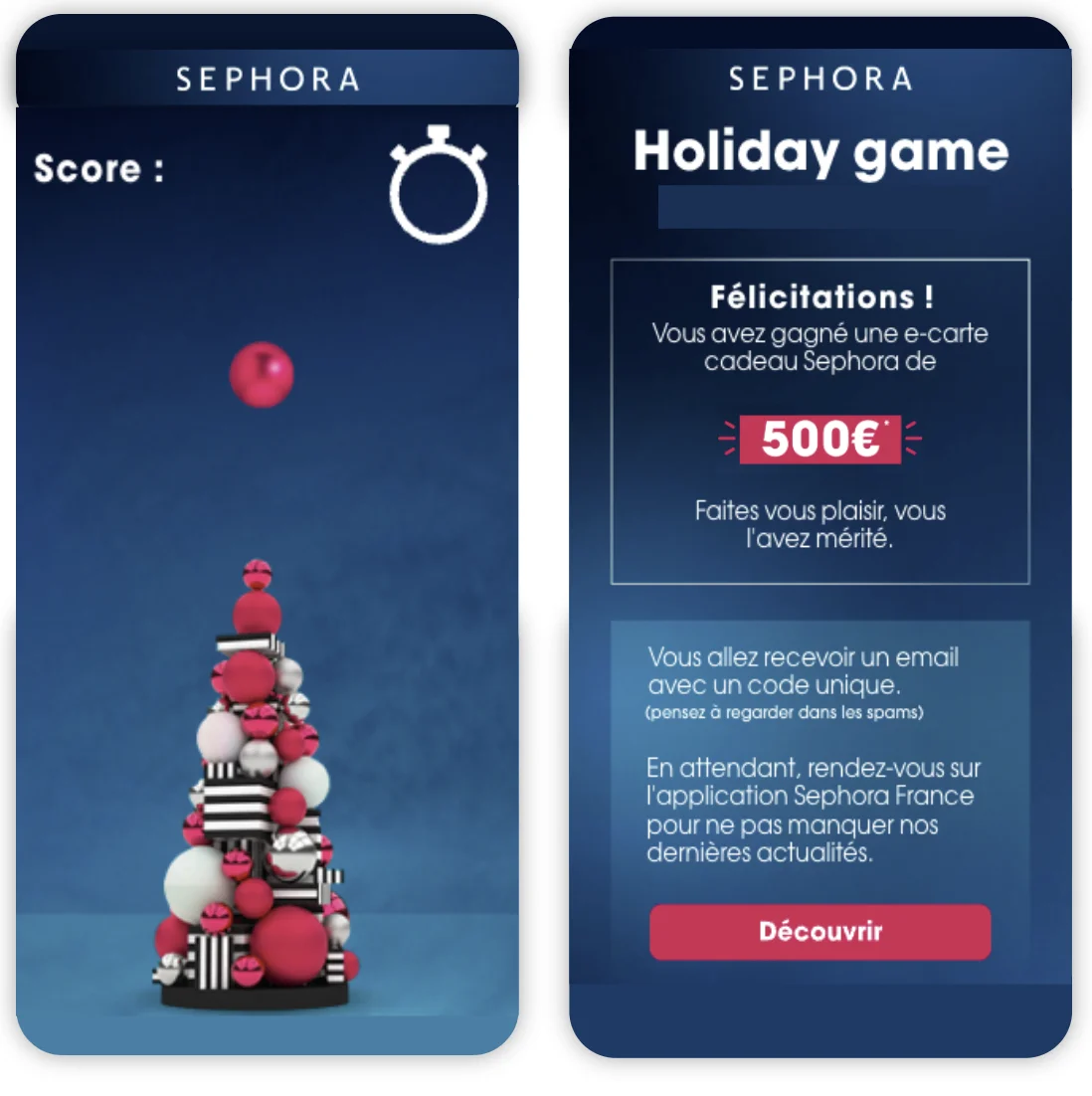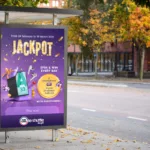In a world where commercial borders are becoming increasingly blurred, internationalisation is becoming an essential growth lever for brands. By 2024, the value of the world’s top 5,000 companies will have reached 13,000 billion dollars, reflecting the importance of international markets.
This expansion offers companies the opportunity to reach a wide audience, optimise their seasonality and diversify their sources of income. This opening presents challenges: language barriers, time zones, etc. cultural expectations and regulatory constraints.
In this article, we explore a strategic lever for successful international marketing: in-app marketing (integrated into the browsing experience of an application). We’ll be focusing on in-app gamification, with tips on how to make your communications interactive and impactful.
Digital opportunities for a successful international marketing campaign
The rise of digital marketing has made internationalisation easier. Entering a foreign market used to involve investment, such as taking part in international trade fairs. Or working with sales agents. Thanks to digital tools, brands can interact with foreign audiences, reducing the barriers to entry.
Digital technology offers a number of advantages for international marketing:
- Greater accessibility: Online platforms enable companies to present their products and services worldwide without the need for a physical presence.
- Greater profitability: Digital campaigns offer a better return on investment than traditional methods.
- An in-depth understanding of its target: analytical tools provide data on consumer behaviour, helping companies to adapt their offerings.
- Competitive intelligence made easy: Digital technology makes it possible to observe competitors’ strategies in different markets.
Take the example of the French eyewear brand lzipizi, which generates 80% of its sales internationally and is present in 150 countries. This expansion has been supported by a multilingual e-commerce strategy and an online presence. Sézane, a fashion brand, has made the most of digital by combining an e-commerce platform with social networking campaigns.
Why opt for an international in-app marketing strategy?
In the digital age, the mobile has become the point of contact between brands and consumers. Smartphone use has exploded, transforming consumer habits and interaction. According to statistics for 2025, the number of smartphone users worldwide has reached 3.8 billion, representing 48% of the population. Spending on mobile advertising is expected to reach $402 billion in 2025, an increase of 11% on the previous year.
This ‘mobile-first’ trend offers opportunities for companies looking to expand internationally. It creates a bridge between brands and their audience, giving them access to new customers wherever they may be.
A number of companies have capitalised on in-app marketing to conquer new markets. Such is the case with Duolingo. The language-learning application adapts its marketing strategy to each market. In 2025, Duolingo launched a campaign in which its mascot, Duo, was ‘killed’ in every country except Japan, respecting local cultural sensitivities. This approach increased user engagement and brand awareness.
International in-app marketing can take place on an application other than that of the brand communicating. Faced with falling sales in China, P&G (Procter & Gamble) stepped up its presence on Douyin (the Chinese version of TikTok) to promote its Pantene brand. By working with influencers and adapting its marketing strategies to the specific characteristics of the market, P&G has managed to regain market share online.
Sephora: a successful gamified in-app campaign on an international scale
For the festive season, Sephora launched a multi-plays and multi-languages Rattrape-Tout game, accessible in-store and online in 10 countries. The aim of this in-app marketing operation was to engage its international customers in order to generate traffic to the website and boost conversion during the festive season. In this case, the game is a marketing performance lever.
The course: the player has to slide a Christmas tree to catch up with as many decorations as possible. Once they have completed the game, they are invited to share their e-mail address and give their opt-in (subscription to the newsletter and agreement to receive the brand’s campaigns). Once they have completed the form, they will find out if they have won a prize. This last window encourages them to stay on the Sephora application to discover these new products.
Thanks to a high-performance, optimised conversion mechanism (with relevant prizes: Sephora gift cards) and an international roll-out that took into account the specific features of each market (language, game path, value of gift cards), the brand reached a peak of more than 310,000 registrations for the operation, with considerable potential sales thanks to the gift cards distributed.


Best practices for a successful international marketing strategy
While in-app marketing offers opportunities for international expansion, it also presents challenges. Companies have to navigate cultural differences, local regulations and consumer expectations. Here, we explore these challenges and share best practices for overcoming them.
1. Study the specific characteristics of each country
Each market has its own cultural codes, consumer habits and communication expectations. Colours, symbols and advertising formats need to be adapted. A study of local trends and competitors helps to adjust the strategy.
2. Define achievable objectives
Launching an international campaign requires rigour and a gradual approach. Rather than trying to cover several markets, we recommand testing an initial region, analysing the results and then adjusting the strategy with a wider roll-out.
3. Gamification
Gamified marketing is a lever for capturing attention and boosting engagement. By integrating game mechanics (challenges, rewards, rankings,etc.), brands can increase the amount of time spent on their applications and help the message to be remembered.
4. Choosing between a multilingual or multi-country campaign
Should you offer a campaign translated into several languages or create campaigns tailored to each country? The answer depends on a number of factors:
- Local legislation: Some countries impose rules on competitions and gamification. A multi-country approach makes it easy to comply.
- Time zone: A global campaign requires the management of publication times and times of interaction with users.
- Rewards and prizes: Tailoring prizes to local preferences can maximise engagement. An Amazon voucher can be
relevant in the USA, while VIP access to a local service may work in Asia.
Conclusion
By integrating gamification into your in-app journey and adapting your communication to each market, your brand can boost its international marketing. Rely on interactivity and fun to reach audiences and raise awareness of your brand abroad. Adictiz offers you a wide choice of game mechanics to explore, as well as tailored solutions to opitmise the distribution of your campaigns!








